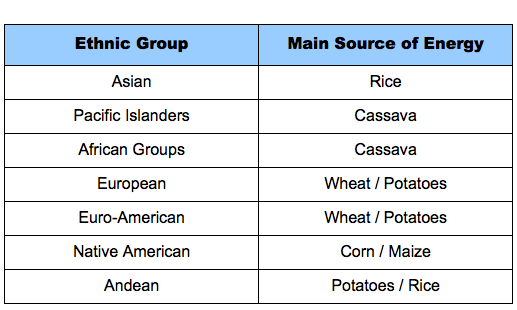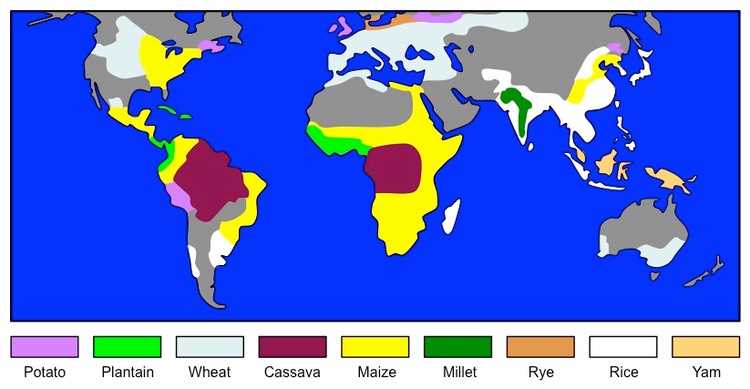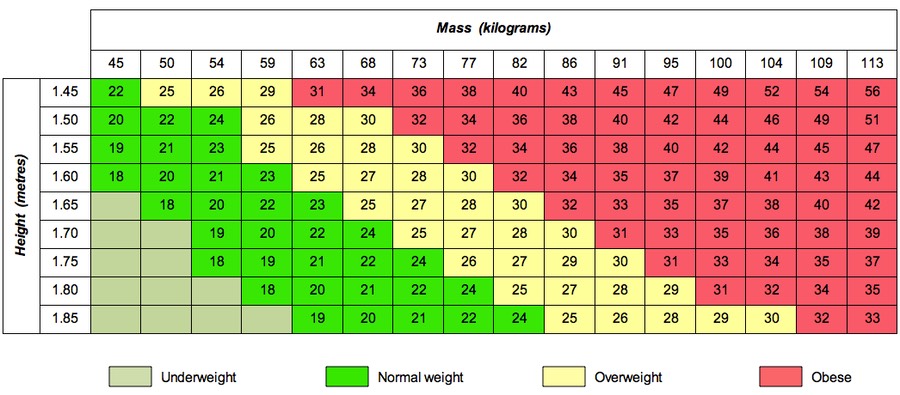A.2.1 Compare the energy content per 100 g of carbohydrate, fat and protein
Fats contain more than twice as much energy per 100 grams than carbohydrates and proteins
Carbohydrates: 1,760 kJ per 100 g
Proteins: 1,720 kJ per 100 g
Fats: 4,000 kJ per 100 g
A.2.2 Compare the main dietary sources of energy in different ethnic groups
- Dietary energy can come from a range of sources (carbohydrates, proteins or fats), but for the bulk of the population, the primary source is crops
- Most populations will supplement this with meat (primarily cattle in Western nations, chicken and fish in Eastern cultures)
- Independent island nations may rely on fish as their main dietary source of energy

Dietary Energy Sources (Carbohydrates) Across the Globe

A.2.3 Explain the possible health consequences of diets rich in carbohydrates, fats and proteins
Excess energy from carbohydrates, proteins or fats will all be converted and stored as fat, leading to obesity and an increased risk of heart failure
- A balanced diet is required in order to achieve sufficient intake of essential nutrients without the risk of unnecessary weight gain
Carbohydrates
- Carbohydrates are broken down into monosaccharide subunits for transport in the blood (blood sugar levels)
- A sustained high intake of carbohydrates may lead to the development of diabetes, as the liver becomes less sensitive to insulin
- Individuals with diabetes may experience more frequent urination (polyuria), increased thirst and dizziness
Proteins
- There are no major adverse health effects to a diet rich in protein, however excessive intake over a long period of time may cause kidney problems
- Deaminating proteins creates urea, and the kidneys will need to work overtime to flush out excess toxins, leading to damage over time
Fats
- Excessive fat intake is strongly correlated to an increase in blood pressure, atherosclerosis and the incidence of coronary heart disease (CHD)
- Atheromas (fatty deposits) develop in the arteries and significantly reduce the diameter of the lumen of the artery wall needed for pulse flow
- This may lead to the formation of clots in the artery, and if this occurs in the coronary arteries it may lead to a heart attack
A.2.4 Outline the function of the appetite control centre of the brain
- Appetite is controlled by hormones (leptin, insulin, CCK) produced in the pancreas, small intestine and adipose tissue
- These send messages to the appetite control centre of the brain (hypothalamus), causing a person to feel that they have eaten enough (satiety)
- The release of hormones can be triggered in a number of ways:
- Stretch receptors in the stomach lining may become activated when the stomach is full
- Adipose tissue may release hormones (leptin) in response to fat storage
A.2.5 Calculate body mass index (BMI) from the body mass and height of a person

A.2.6 Distinguish, using the body mass index, between being underweight, normal weight, overweight and obese
• Underweight – below 18.5 • Normal weight – 18.5 to 24.9
• Overweight – 25 to 29.9 • Obese – above 30.0
Body Mass Index (Adult Male)

A.2.7 Outline the reasons for increasing rates of clinical obesity in some countries, including availability of cheap high-energy foods, large portion sizes, increasing use of vehicles for transport, and a change from active to sedentary occupations
Clinical obesity describes a significant excess of body fat and is typically caused by a combination of two factors:
1. Increasing energy intake (more fats produced)
- The affordability of sugar-rich, high-energy food can cause people to spurn more nutritional alternatives
- People in developed countries are frequently being served larger portion sizes ('super-sizing')
2. Decreased energy expenditure (less fats consumed)
- There is an increased reliance on vehicular transport in developed countries, reducing frequency of exercise
- Advancements in technology (computers, robotics) have reduced the level of physical activity in a number of occupations
A.2.8 Outline the consequences of anorexia nervosa
Anorexia nervosa is an eating disorder in which individuals severely limit the amount of food they intake
It is most common in females with body image anxiety and is associated with the following health implications:
- Malnutrition – deficiency in essential nutrients due to inadequate eating patterns
- Hormonal imbalance – including changes in menstrual cycle and impairment of normal growth and development
- Bone and muscle problems – there is muscle and bone deterioration, resulting in reduced muscle mass and more fragile bones
- Mental health issues – development of mood swings, phobias and reduced mental focus
- Anaemia – can cause circulatory problems, including heart failure
- Skin problems – including discoloration and excess hair production
- Immune disorders – increased susceptibility to infections, diminished capacity for healing and repair
- Death – if left untreated for a prolonged period, death may finally result